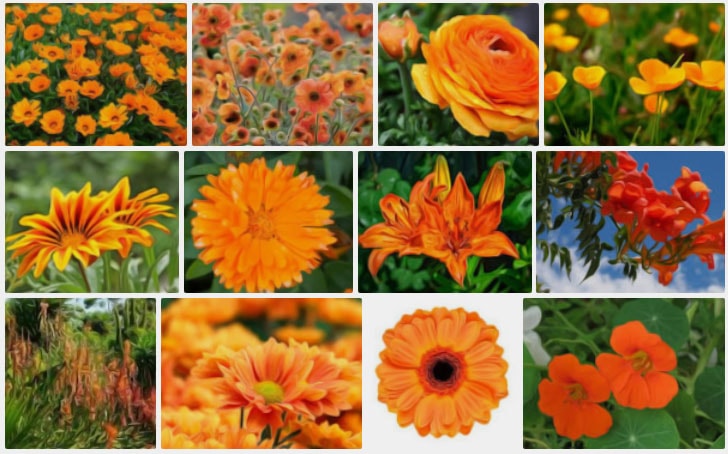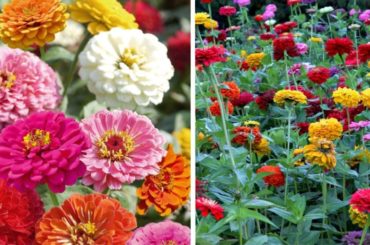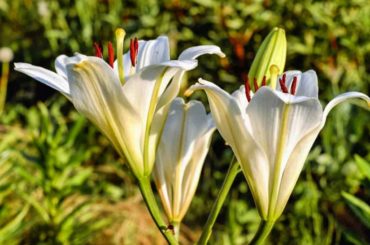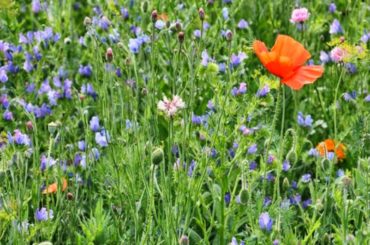Aloe

Aloe has bright orange flowers that can go as far as red. They slice with the bright green of its fleshy foliage. Its tube-shaped flowers appear at the end of a long stem. It evokes the aloe vera, but this species is less known. You can easily grow it in the ground, but the seedlings can perfectly be enjoyed indoors.
Calibrachoa
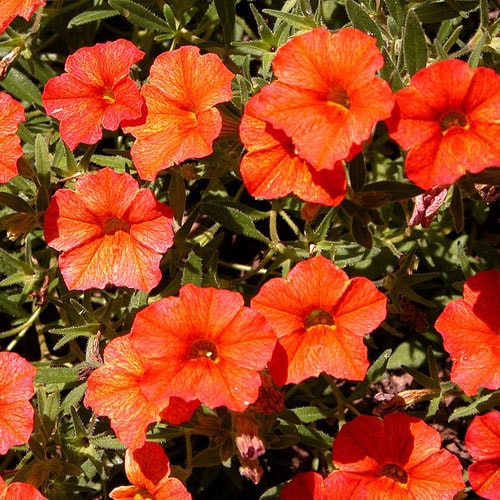
This flowering plant comes in several varieties, crackling fire is the most widespread, classic, it has a falling port. It is appreciated by gardeners for the bright hue of its flower that gives color and sparkle to the gardens. Its orangey yellow is sometimes slightly coppery, but it can also be salmon or soft pink. She loves the sun and half-shade and she needs water.
safflower

Safflower of the dyers is the only variety that you will find in France. It looks like a big dandelion in its foliage. Its flowers can be yellow or dark orange. It has a bushy habit and a height of 80 cm to 1 meter. It flowers from July to September, it likes the sun, stony soils and drained since it needs only little water.
Wallflower
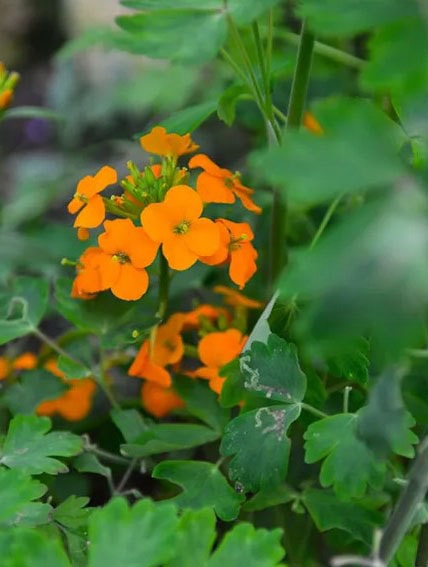
The orange wallflower is not necessarily the best known and it's a shame, because it brings vitamin to the atmosphere of your garden with its beautiful hue. She likes dry, stony soils as long as they are sunny. These are spring flowers that perfectly adorn your beds and your potées.
The martagon lily
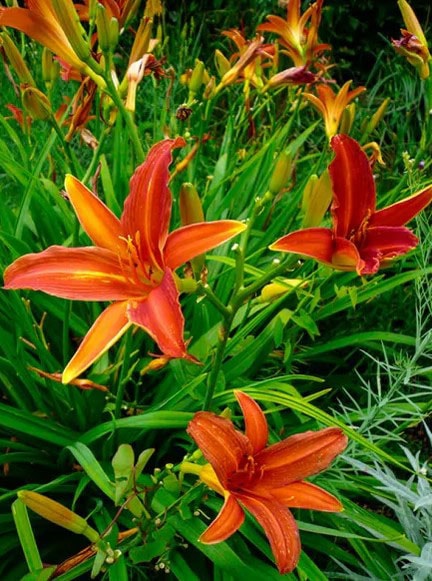
The lily is part of the perennial orange flowers. Its particularity is that its flower lasts only one day, however the plant produces in abundance. These large flowers appear in July and August and have a pretty trumpet shape. They can reach between 60 and 70 cm in height when they are mature. It is a plant that grows in isolation, but you can perfectly grow it in solid or edge in the sun or partial shade, preferably in fairly rich soil.
gazania

This plant has large orange flowers that in some varieties can be red striped, tabby and yellow. Its large diameter and its beautiful height make it a very decorative flower. It is grown in the sun on a drained soil. It is easy to maintain and requires very little water.
Grenadier
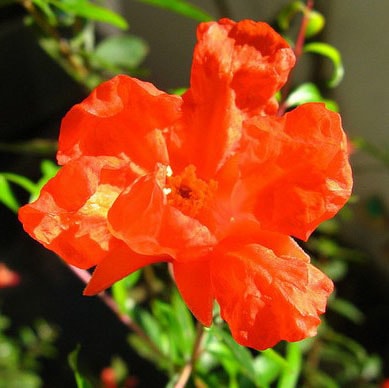
Its large bright orange trumpet-shaped flowers are particularly decorative. It likes all soils as long as they are dry and drained. He enjoys the sun. And its flowers appear between May and August. His water needs are limited. Its fruits are very appreciated.
Ixia
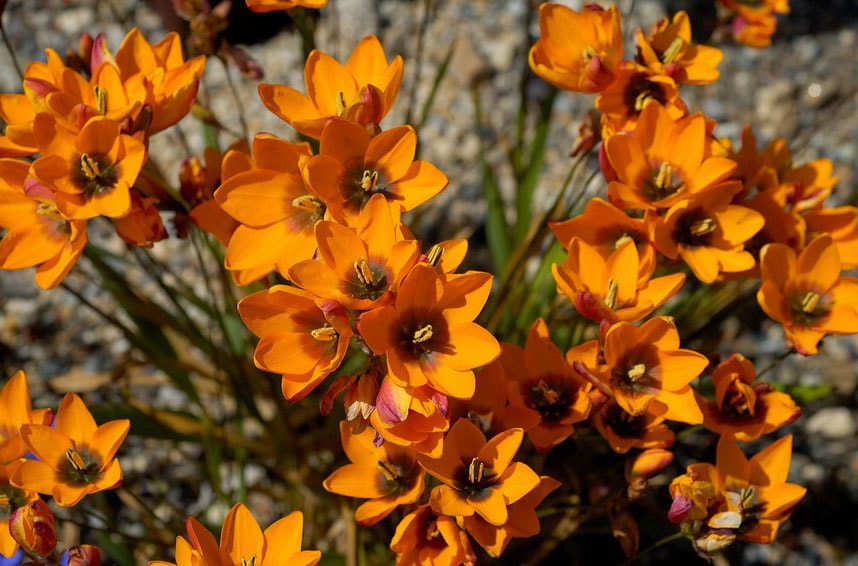
They are perennial orange flowers, the height of which can vary according to the varieties. They form a star with 6 branches welded tube at the base. They are grouped in ears. They can be grown in clumps and they make very nice bouquets. It is necessary to cultivate them in full sun so that the flowers appear and open. They are present throughout the summer and are semi-hardy. In the south, they hold all the winter, elsewhere it is necessary to mulch them or to return them.
Hibiscus

The hibiscus is also called rose of China, it is a very delicate flower whose petals evoke the matter of the crepe paper. Its foliage is persistent and it supports temperatures up to 0 ° C. If the winter is colder, it will be necessary to return it. Its orange hue brings joy to the garden. It is grown perfectly in pots in the garden, on the terrace and even in the house. It flowers from March to October and likes wet, drained soils, full sun or partial shade.
Lantana camara
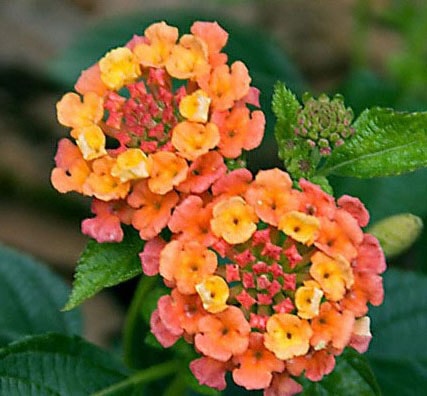
The lantana camara comes in different varieties. Its flower is very aesthetic and beautifully decorates your garden. It comes in bouquet and can be orange, red or yellow. She particularly likes sunny places. It requires little maintenance and water and can withstand temperatures down to – 4 ° C, beyond, it will mulch the plant so that it does not freeze.
The tiger lily
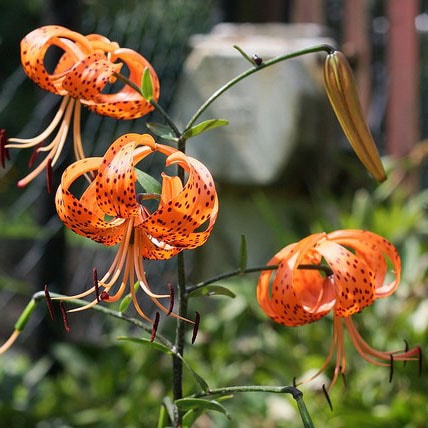
The tiger lily is a variety of lilies in its own right, which is very appreciated for the delicacy and the very original shape of its flowers. They are pendent and arranged in a cluster. They are orange, sometimes red, and punctuated with purple. They beautify your garden between July and September and present 15 to 30 flowers per stem. They particularly appreciate the sun and they can measure from 1 to 1.50 meter.
Gomphrena
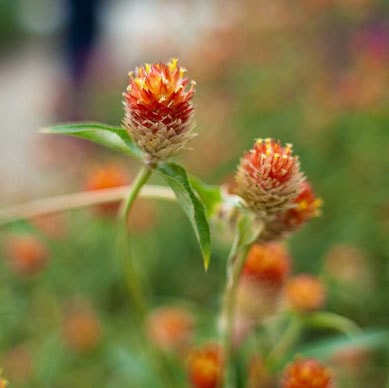 © Yoko Nekonomania
© Yoko NekonomaniaYou will appreciate the very bright orange of this flower. They may be in the form of longer or shorter ears. Its height is usually 20 to 70 cm. He particularly likes the sun, the drained soils and he can be cultivated as well in massifs as in borders. It usually blooms from July to October.
Hoya

This plant gives two-tone light orange and dark orange or even red flowers. They appear between March and November and they have a waxy appearance. Its foliage is dark green and thick. This climbing plant is vigorous and can reach two meters in height. It is grown in pots or planters in hot places and in full sun. In France it finds its place in the greenhouse, in the house, the veranda or on a sheltered terrace when returning in winter.
Eschscholtzia
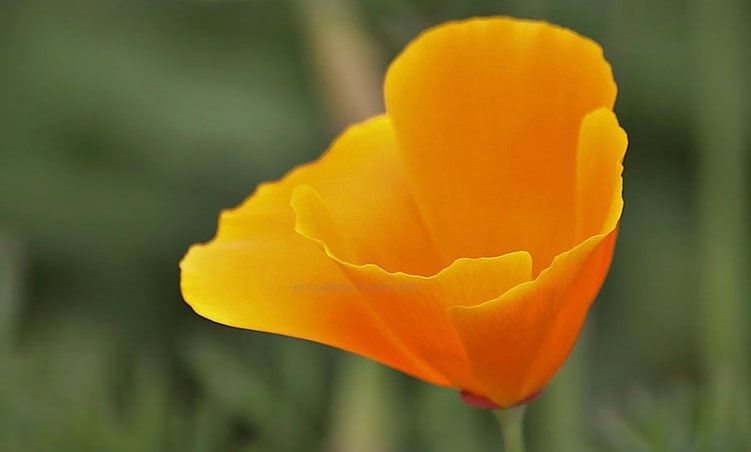
This plant offers pretty orange double flowers tinged with yellow. Because of its small height, it is perfect in edge or in planter. We like its compact and rounded port. It flowers from May to October and is part of the same family as poppies or poppies. She likes the sun and dry or drained soils. It is easy to grow and requires little water.
fritillary
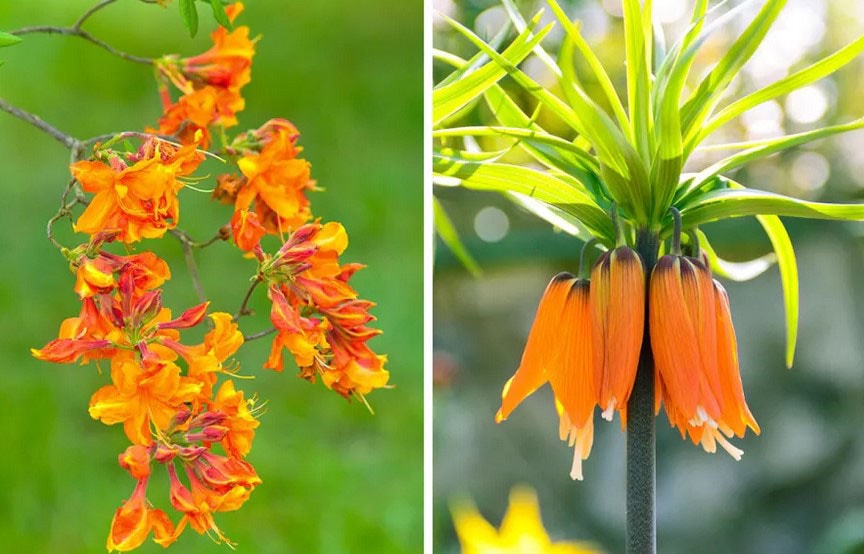
This plant offers very pretty orange flowers and delicate, surmounted by erected leaves, green bronze. The flowers form beautiful bouquets that are steadied along a purplish brown stem and rigid. It is a hardy plant that likes sunny or partial shade. They are easy to grow in the ground, but also in pots or planters. She likes wet or drained soils.
Erysimum
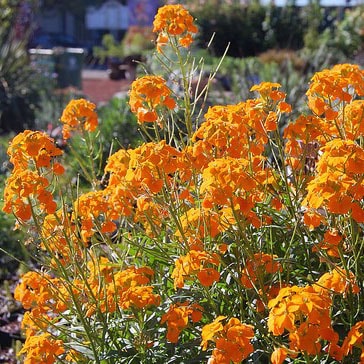 © Faroutflora
© FaroutfloraThis flower is in the form of clusters that can resemble the wallflower. She goes out from April until the end of May. The flower is either golden yellow or bright orange. It has the advantage of withstanding very low temperatures, up to -12 ° C. It is perfect for the massifs, the low walls, the rockeries and it is resumed itself. It is a herbaceous plant that occurs in erect or compact tufts.
Echeveria
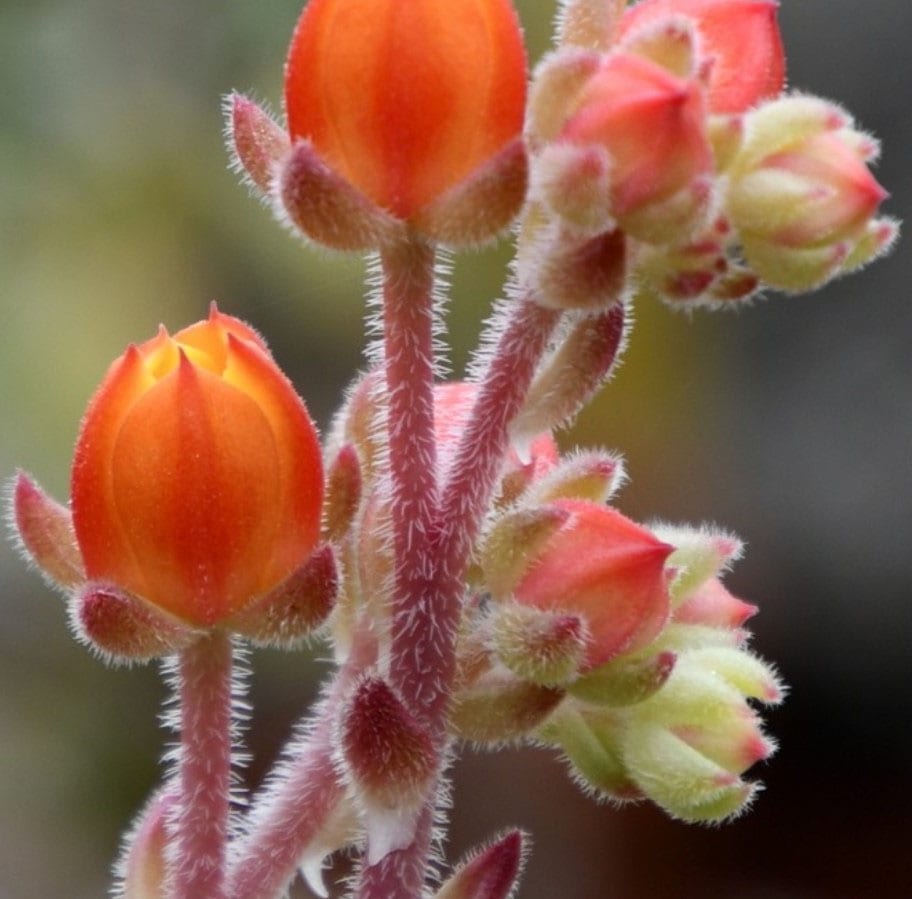
These flowers are in the form of tall orange shaft. The leaves are long, narrow, serrated in some varieties and arranged in a rosette. The stem is waxy and covered with small white hairs. Some species have short, very thick stems. It is easily grown in the south in open ground or in very deep pots, in mild and Mediterranean climates.
Celosia
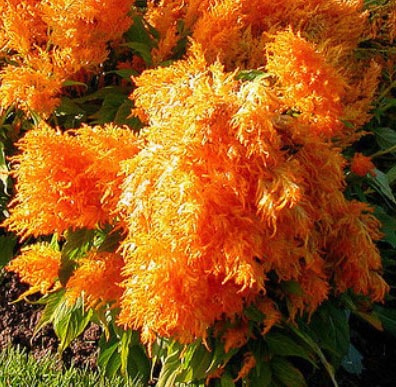
This plant has a long bloom from June to October and is in the form of inflorescence in plumes of a pretty orange-gold hue. It can reach 70 cm in height. It is a plant that is easily grown in borders and in clumps, which make pretty fresh and dry bouquets. She likes wet, drained soils, sun or partial shade. Its leaves are dark green, lanceolate or veined depending on the species.
Canna
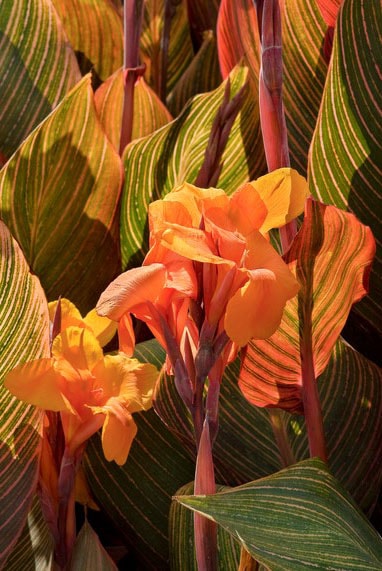
This plant comes in different forms depending on the variety. The canna tropicanna can reach heights of 1.20 to 1.50 meters. These pretty flowers appear between July and November and are a bright orange color and intense. Its foliage is appreciated because it is very decorative with its hue that starts with a purple red before splashing cream, pink and green. It is very resistant since it supports temperatures down to -8 ° C.
milkweed
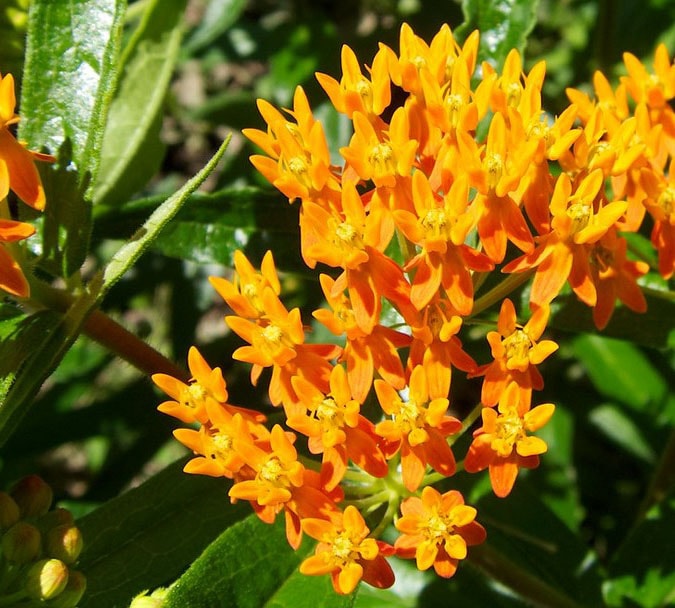 © Beautifulcataya Flickr
© Beautifulcataya FlickrThe flowers of this plant are in bright orange bouquet and yellow. It has a height of 60 cm and flowers between July and September. The leaves are medium green, slightly bluish, and are spirally wrapped around the stem. These flowers are perfect for beautiful bouquets. It is hardy, but prefers well-drained soils. It is grown in the ground.
Sunflower Paquito
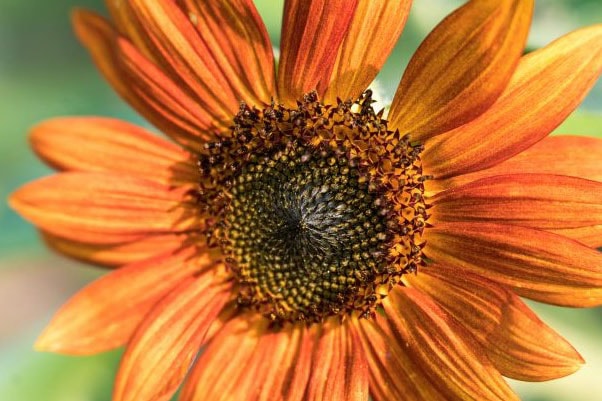
The sunflower paquito is a sunflower of small size which finds its place easily in the massifs. Its big flower can be orange, but also red, gold or yellow. You will grow it in full sun and you must not forget to lighten it as it grows. It can not stand cold at all and you can sow it between March and May. It blooms from July to October.
Sparaxis

The elegant sparaxis has a branched floral stem that supports 3 or 4 pale orange flowers. The heart of it is black with three yellow spots. It flowers in March and April or in summer. Its foliage is erect with leaves arranged in fan, it is thus very decorative. The height of the flowers is 40 cm. It is grown very well in pot, rock, solid or flower lawn.
Trolle from China

This plant gives in July and August pretty big flowers (3 to 5 cm in diameter), orange yellow. Its flared cut with its very fine petals gives it a certain elegance. It has an erect port and a height of 60 to 90 cm. It is perfect on the edge, and it's a flower that you can cut to make wonderful bouquets. She particularly likes the sun or the semi-shade as well as clay or humid soils, wet and neutral. She needs to be watered regularly.
Suzanne aux-black eyes
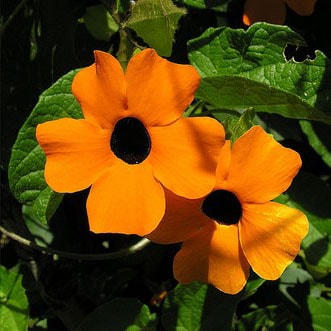
This very pretty plant offers orange-yellow to bright orange flowers with a black heart that gave it its name. It appears in June and lasts until the first frosts. It can go up to 2 or 3 meters. This perennial liana has small purple stems, hairy and voluble. Its foliage is persistent and very decorative, although slightly rough. It can not withstand very cold temperatures, it will have to be protected and mulched during the winter.
Physalis
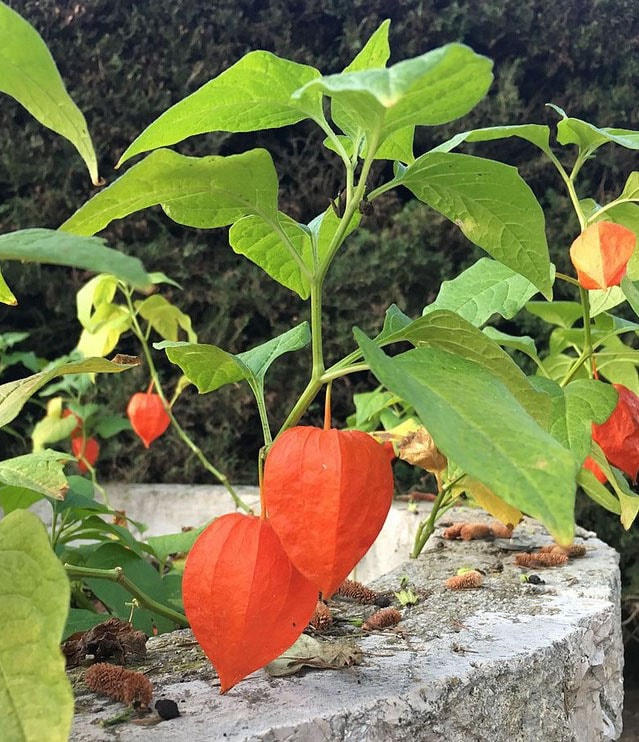
The physalis looks like a lantern, this orange flower is perfect and also a must for lovers of dry bouquets. It is a hardy perennial and very easy to grow. In pots, in clumps, in borders or on your balcony, it is pleasing in all types of soils, rather drained and dry. She enjoys the sun and partial shade and blooms from June to December bringing a colorful and cheery touch to your garden. It perfectly supports the cold.
Zinnia
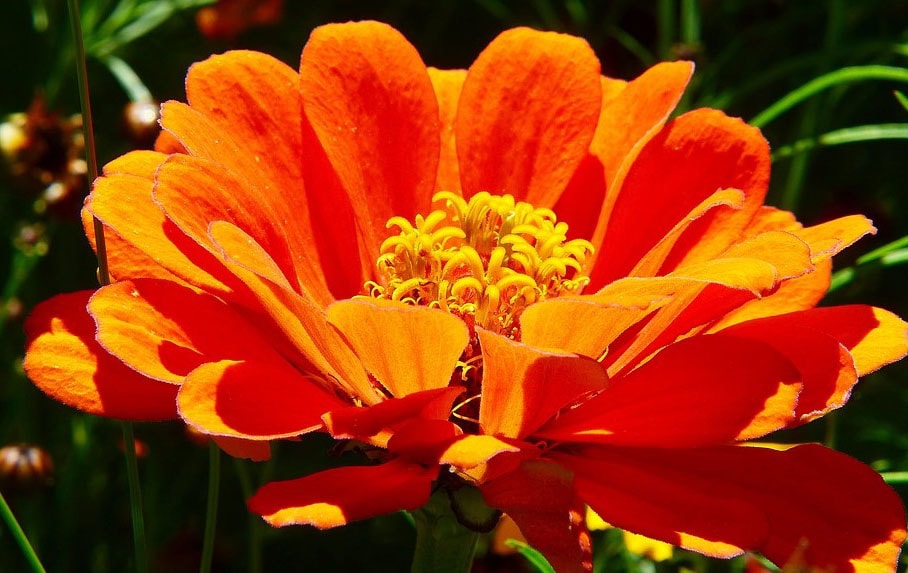
The zinnia is a simple plant to cultivate in border, in solid like in pot or in planter. Its large, daisy-like flowers feature a variety of colors including a bright orange that gives life to your garden or terrace. It flowers throughout the summer, and it can be cut to make beautiful bouquets. You will sow it in the spring.
Primrose
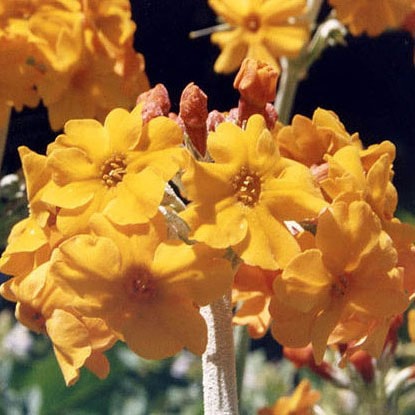
The primula, the Primula Bulleyana, can present various colors, including an orange-yellow, a blue, a purple … It is between May and June that adorns your garden. It reaches a height of 60 cm. She likes the sun if it is in a very wet soil, otherwise, it is better to put it in the shade or half-shade. It is semi-evergreen and is particularly popular near a pond or stream.
Phalaenopsis

This plant comes in many varieties that have more or less large flowers and very varied colors, the orange is certainly the least known, but not the least beautiful. It can reach for some species up to 10 cm in height and sometimes up to a single flowering stem of 40 to 80 cm. You grow it easily in your garden, but under temperate or hot greenhouse or indoors. She likes the sun and the semi-shade.
Worry
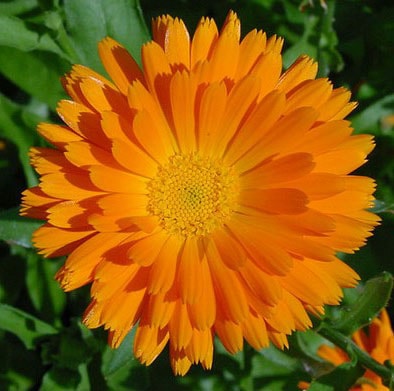
There are many varieties to worry about: the Estérel produces rather large double and orange or yellow flowers between July and October. The orange baby also has double flowers, it flowers from April to the first frosts, it is rocky, solid or border, just like the Calypso blooming later, from May. The Fiesta gitana flowers between April and July and gives double flowers that can be orange or yellow. The Indian Prince gives darker orange flowers with a mahogany lapel and blooms between June and October.
The Oriental poppy

Larger poppy flowers can grow up to 20 cm in diameter. They are very noticeable for their very bright orange and sometimes red hues. Often his heart is black. It flourishes in May and June, more or less later depending on the region. Its large leaves cut and hairy have a dark green color. At the end of the bloom, its foliage disappears and reappears in autumn. The poppy can withstand very cold temperatures, up to -20 ° C and -30 ° C.
You will like also :


